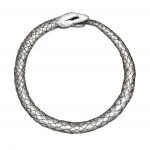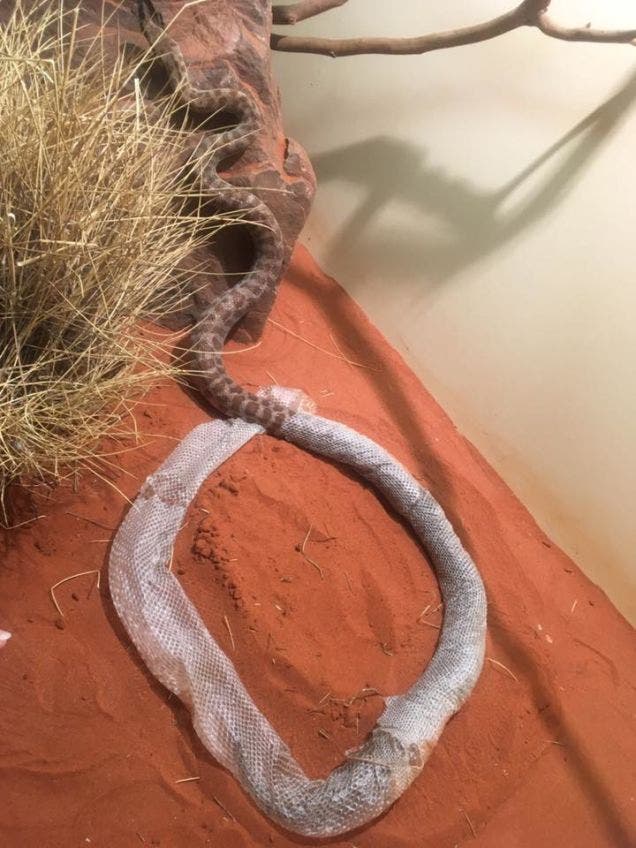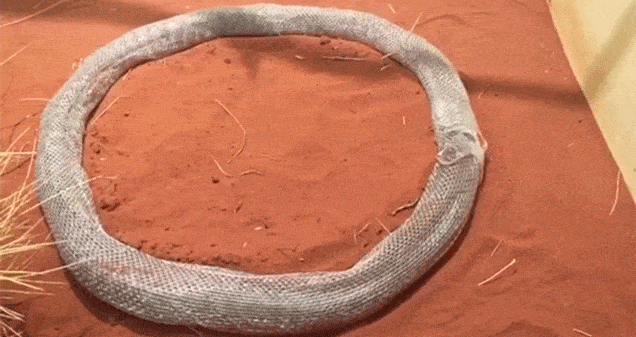Visitors to the Alice Springs Reptile Centre, home to the largest reptile display in Central Australia, were stunned by the sight of a snake who spun in circles countless times in a ring made from its own skin. The Stimson’s Python specimen somehow managed to “shed completely within itself with its tail finishing inside its ‘sloughed mouth’,” a facebook update from the official Alice Springs Reptile Centre reads. “It actually looks like a steering wheel,” the update continues.

The snake eating its own tail is the symbol for Ouroboros, which is a Greek word meaning ‘tail devourer’. It’s one of the oldest mystical symbols in human culture, and like all good symbols, it has many meanings. Foremost, the serpent biting or devouring its own tail represents the cyclic nature of the universe — creation out of destruction, life out of death. It can also be envisioned as a symbol of time with the tail of the serpent representing the past which appears to be devoured (gone), when in reality it moves into a new inner domain of existence vanishing from view but still existing.
Thankfully, the Stimson’s Python managed to free himself and emerged out of the Ouroboros with a new skin — but not before three hours had passed.

via Sploid
Was this helpful?




